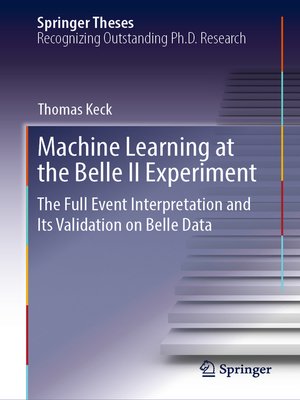Machine Learning at the Belle II Experiment
ebook ∣ The Full Event Interpretation and Its Validation on Belle Data · Springer Theses
By Thomas Keck

Sign up to save your library
With an OverDrive account, you can save your favorite libraries for at-a-glance information about availability. Find out more about OverDrive accounts.
Find this title in Libby, the library reading app by OverDrive.



Search for a digital library with this title
Title found at these libraries:
| Loading... |
This book explores how machine learning can be used to improve the efficiency of expensive fundamental science experiments.
The first part introduces the Belle and Belle II experiments, providing a detailed description of the Belle to Belle II data conversion tool, currently used by many analysts.
The second part covers machine learning in high-energy physics, discussing the Belle II machine learning infrastructure and selected algorithms in detail. Furthermore, it examines several machine learning techniques that can be used to control and reduce systematic uncertainties.
The third part investigates the important exclusive B tagging technique, unique to physics experiments operating at the Υ resonances, and studies in-depth the novel Full Event Interpretation algorithm, which doubles the maximum tag-side efficiency of its predecessor.
The fourth part presents a complete measurement of the branching fraction of the rare leptonic B decay "B→tau nu", which is used to validate the algorithms discussed in previous parts.






